5 TikTok Skincare Hacks: Are They Worth Trying
TikTok has revolutionized how we discover beauty trends, making skincare hacks more accessible than ever. From quick fixes to quirky experiments, the app’s user-generated content has become a hub for skincare enthusiasts looking for easy-to-follow tips with promises of instant results.
But while the appeal of trying a trending hack might be tempting, not every method you see on TikTok is rooted in science—or safe for your skin. So, before you dive into the latest viral trick, it’s important to separate what’s worth trying from what’s better left in your “For You” feed.
Popular TikTok Skincare Hacks
The TikTok beauty community is buzzing with creative skincare trends that range from practical to perplexing. Here’s a breakdown of some of the hottest hacks making waves:
1. Slugging
A nighttime ritual where you apply a layer of petroleum jelly as the final skincare step. This hack claims to seal in moisture, leaving skin hydrated and plump by morning.
2. Ice Rolling
Fans swear by ice rollers or simple ice cubes to reduce puffiness, tighten skin, and achieve that enviable glow. The cold therapy also promises to boost circulation and calm inflammation.
3. DIY Skin Masks
Natural ingredients like turmeric (for brightening), honey (for hydration), and yogurt (for gentle exfoliation) have taken over TikTok’s DIY skincare corner. Users love the idea of using pantry staples for a spa-like experience at home.
4. Micellar Water Makeup Removal Test
A viral trend where users swipe their faces with micellar water after cleansing to check if their cleanser is doing its job. The “clean cotton pad” test has sparked debates about proper cleansing techniques.
5. Guasha massaging
This ancient tool has become a TikTok favorite for contouring the face and reducing puffiness. The key is using it in upward, outward motions to stimulate lymphatic drainage. It’s great for relaxation, but it might take some practice to avoid causing skin irritation with excessive pressure.
1.Slugging: The Petroleum Jelly Skincare Trend
Slugging has recently become a viral TikTok skincare trend, where users apply a thick layer of petroleum jelly (such as Vaseline) as the final step in their nighttime routine. The idea behind this trend is simple: seal in moisture and create a barrier that locks in all the benefits of your previous skincare products. The result? Hydrated, plump, and nourished skin by morning.
How It Works
Slugging works by creating an occlusive layer on the skin, which prevents water loss. When you apply petroleum jelly on top of your moisturizer or serum, it traps the active ingredients inside and prevents your skin from drying out overnight. This is especially beneficial for those with dry or compromised skin barriers who need extra hydration.
Benefits of Slugging
- Intense Moisture Retention: For people with dry skin, slugging helps lock in moisture and ensure long-lasting hydration. The petroleum jelly acts as a barrier, preventing your skin from losing moisture while you sleep.
- Protecting the Skin Barrier: It helps to fortify the skin’s protective layer, which is essential in preventing irritation and inflammation, especially if your skin is sensitive or recovering from treatments like exfoliation.
- Enhanced Effectiveness of Other Products: By sealing in the products you apply beneath it, slugging can help improve the absorption of your serums and creams, allowing their benefits to penetrate deeper into the skin.
Is It Safe for Everyone?
While slugging is generally safe, it’s important to know that it may not be suitable for all skin types. Here’s why:
- Oily Skin: For people with oily or acne-prone skin, slugging can feel heavy and may clog pores, potentially leading to breakouts.
- Sensitive Skin: Those with sensitive skin or conditions like eczema may find that the occlusive nature of petroleum jelly exacerbates irritation or discomfort. It’s essential to patch-test the product before slathering it all over your face.
- Acne-Prone Skin: If you have active breakouts, applying a thick layer of petroleum jelly could worsen acne by trapping bacteria or excess oil inside the pores.
To Slug or Not to Slug?
Ultimately, slugging can be a game-changer for individuals with dry, flaky, or compromised skin who need an added moisture boost. However, for those with oily, acne-prone, or sensitive skin, it’s crucial to approach the trend with caution. If you decide to try it, make sure to use petroleum jelly sparingly and focus on areas that need extra hydration, avoiding areas like the T-zone where excess oil tends to build up.
How to Incorporate Slugging Into Your Routine
- Cleanse your face thoroughly to remove makeup, dirt, and excess oils.
- Apply your regular skincare products like serums, moisturizers, or treatment creams that target your skin concerns.
- Finish with a thin layer of petroleum jelly to seal everything in. Be careful not to overdo it—less is more in this case.
- Leave it on overnight, and in the morning, cleanse your skin again to remove the petroleum jelly and any residue.
In conclusion, slugging is a trending TikTok skincare hack that can be beneficial for dry skin but isn’t for everyone. If you’re considering jumping on the slugging bandwagon, make sure to do a patch test first and evaluate whether it fits into your personal skincare needs.
2.Ice Rolling: A Cool Trend for Depuffing and Glowing Skin
Ice rolling has quickly gained popularity on TikTok as a refreshing, soothing way to reduce puffiness and promote a glowing complexion. The concept is simple: rolling a chilled device (often called an ice roller) across your skin to calm inflammation, tighten pores, and refresh tired-looking skin. But does this quick fix live up to the hype? Let’s break it down.
How Ice Rolling Works
Ice rolling involves using a roller with a gel or liquid-filled head that you freeze before applying it to your face. The cold temperature constricts blood vessels and reduces swelling, which can give your face a more sculpted, awake appearance. It’s particularly popular for targeting puffiness around the eyes, but it’s also said to boost circulation, smooth out fine lines, and even reduce redness.
The cooling effect of the ice roller works in two ways:
- Vasoconstriction: The cold causes blood vessels to constrict, which reduces the flow of fluids that cause puffiness. This can be especially beneficial first thing in the morning when your face might be a little more puffy from sleep.
- Circulation Boost: The gentle rolling motion stimulates blood flow, which can help deliver nutrients and oxygen to the skin, giving it a more vibrant, refreshed look.
Benefits of Ice Rolling
- Decreases Puffiness: Ice rolling is most effective for reducing puffiness around the eyes, especially if you wake up with bags or swelling from poor sleep, salty foods, or allergies. The cold constricts the blood vessels and helps drain excess fluid.
- Increases Blood Circulation: The rolling motion increases blood flow to the skin, which can improve the overall health and appearance of your complexion.
- Tightens Pores: The cold also helps tighten pores temporarily, giving your skin a smoother, more even look.
- Reduces Redness: For those prone to redness, ice rolling can help calm inflamed skin, especially after treatments or if you’ve been exposed to heat or sun.
Is Ice Rolling Safe for Everyone?
Yes, generally speaking, ice rolling is considered safe for most skin types. However, if you have sensitive skin or a skin condition like rosacea, you may want to approach it with caution. Prolonged exposure to extreme cold can irritate sensitive skin or worsen redness. To prevent this, it’s best to roll for short intervals—no more than 1-2 minutes at a time—and always move the roller gently over the skin.
Additionally, you want to make sure the roller is clean before using it to avoid transferring dirt or bacteria to your face. It’s also important to avoid putting ice directly on your skin without a barrier, like a cloth or the roller’s smooth surface, to prevent frostbite.
To Ice Roll or Not to Ice Roll?
Ice rolling can be a great addition to your morning routine if you’re looking for a quick, refreshing boost. It’s an excellent choice for reducing puffiness, waking up the skin, and improving circulation. If you’re after instant results without a lot of fuss, this TikTok hack could be worth trying.
However, like many beauty trends, it’s important to remember that ice rolling is not a substitute for a consistent skincare routine. While it offers temporary benefits, it won’t solve long-term skin issues like acne or deep wrinkles.
Ice rolling can be a fun and effective way to give your skin a refreshed look—especially when it comes to reducing puffiness and enhancing circulation. It’s a non-invasive, easy-to-do routine that provides immediate results, making it a perfect TikTok skincare trend to try. Just be mindful of your skin’s sensitivities and always use the roller correctly to avoid irritation.
3.DIY Skin Masks
DIY skin masks made with natural ingredients like turmeric, honey, and yogurt have gained viral attention on TikTok as an accessible, cost-effective way to boost your skincare routine. These homemade masks promise to hydrate, brighten, and rejuvenate the skin with ingredients you probably already have in your kitchen. But are these at-home concoctions truly effective, or do they just sound too good to be true? Let’s dive into the details.
Common DIY Skin Masks and Their Benefits
- Turmeric Mask for Brightening and Even Skin Tone:
- Why It’s Popular: Turmeric is known for its anti-inflammatory properties, and many TikTok videos claim it helps brighten dark spots and even out skin tone. It’s rich in antioxidants, which can help fight off free radicals that damage the skin.
- Potential Benefits: Brightens dull skin, reduces hyperpigmentation, and calms redness or irritation. It’s especially popular for lightening dark circles or pigmentation.
- Caution: While turmeric can be great for reducing redness, it can also stain your skin or clothes. Be sure to wash it off thoroughly, and use only a small amount if you’re worried about yellowing.
- Honey and Yogurt for Moisture and Soothing:
- Why It’s Popular: Both honey and yogurt are known for their hydrating and soothing properties. Honey is naturally antibacterial, and yogurt is packed with lactic acid, an AHA that can gently exfoliate.
- Potential Benefits: These ingredients can hydrate the skin, create a soft texture, and calm any inflammation or irritation. This mask is great for dry or sensitive skin.
- Caution: Honey might not be suitable for those with allergies to bee products, and yogurt can be irritating for those with dairy sensitivities.
- Avocado and Oatmeal Mask for Hydration and Soothing:
- Why It’s Popular: Avocado is rich in healthy fats and antioxidants, while oatmeal is renowned for its ability to calm irritated skin. This combination promises to moisturize and soothe skin without being too harsh.
- Potential Benefits: Great for dry, irritated, or sensitive skin, this mask can help lock in moisture and restore your skin’s natural barrier. It can also reduce inflammation, making it an ideal choice after sun exposure or harsh weather conditions.
- Caution: Oatmeal can sometimes cause breakouts in people with sensitive or acne-prone skin, as it can be a bit too heavy for some.
- Cucumber and Aloe Vera for Refreshing and Hydrating:
- Why It’s Popular: Cucumber and aloe vera are classic ingredients for soothing sunburns and calming the skin. They’re high in water content, making them excellent for hydration and cooling down irritated or inflamed skin.
- Potential Benefits: This mask can help cool and hydrate, perfect for tired or puffy eyes, and reduce redness. It’s commonly used as an after-sun remedy.
- Caution: Cucumber can sometimes cause irritation if you have sensitive skin, so it’s always wise to patch test before applying it to your face.
Are DIY Masks Safe and Effective for All Skin Types?
While these DIY masks may seem appealing, they aren’t without risks, and their effectiveness can vary from person to person. Here are some things to keep in mind before slathering on that DIY creation:
- Potential for Skin Sensitivity: Many TikTok videos feature natural ingredients that claim to be gentle, but in reality, some ingredients can be irritating to the skin. For example, turmeric, while great for brightening, can cause redness or irritation in sensitive skin types. Likewise, citric acid in lemon juice can be too harsh for those with sensitive or dry skin.
- Lack of Scientific Backing: While some ingredients in DIY masks like honey and yogurt have research supporting their skincare benefits, others (like turmeric for hyperpigmentation) are more anecdotal. Without proper studies, it’s hard to say whether these natural ingredients are as effective as commercial skincare products, which are often formulated with precision and tested for safety.
- Allergic Reactions: Be aware of potential allergic reactions to certain ingredients. Common allergens like honey or citrus can trigger irritation or an allergic response, especially if you have sensitive skin. Always patch test any DIY ingredient on a small part of your skin before applying it to your face.
- Mess Factor: While these masks may sound easy to make, they can be messy and not as convenient as store-bought options. Turmeric masks, for instance, can stain your skin or clothes. You might also have to spend extra time cleaning up afterward.
How to Safely Incorporate DIY Masks into Your Routine
- Patch Test First: Always patch test any new ingredient or mask on a small area of skin (like behind your ear) to ensure you don’t have an allergic reaction.
- Don’t Overdo It: While it’s tempting to use these masks frequently, moderation is key. You don’t need to mask every day, and overuse could lead to irritation or clogged pores.
- Use Fresh Ingredients: Always use fresh, clean ingredients when making DIY masks. Old or expired items may have bacteria that could irritate the skin.
- Balance with Other Skincare Products: DIY masks shouldn’t replace your core skincare routine. They can be a fun addition but shouldn’t take the place of scientifically-backed products like moisturizers, sunscreens, and serums.
Should You Try DIY Skin Masks?
DIY skin masks can be fun and a natural way to experiment with skincare, but they should be used with care. While some ingredients have genuine skincare benefits, it’s important to remember that they may not be suitable for all skin types. They also lack the testing and consistency of commercial products.
If you have sensitive skin or are unsure, it’s always safer to stick to dermatologist-approved treatments or use DIY masks sparingly. When done correctly, they can add a fun, hydrating boost to your skincare routine—but just like any trend, it’s important to approach it with a critical eye and be cautious about what’s actually working for your skin.
4.Micellar Water Makeup Removal Test
If you’ve spent any time scrolling through TikTok, you’ve probably seen the Micellar Water Makeup Removal Test in action. It’s one of those skincare hacks that’s so simple, you can’t help but wonder: Is my skin really as clean as I think it is?
The concept is pretty straightforward. After cleansing your face, you grab some micellar water and swipe it across your skin with a cotton pad to see how much makeup (or gunk) is left behind. Spoiler alert: You might be surprised by what you find!
So, What’s the Deal with Micellar Water?
Micellar water is like the magic trick of skincare—it uses tiny oil molecules called micelles that attract and grab onto dirt, oil, and makeup, without needing to scrub or rinse. It’s the quick fix for when you don’t have the time (or energy) for a full-on cleanse, but you still want to wipe away the day.
If you’re looking for something gentle yet effective, it’s a go-to option. And that’s why it’s so popular for this TikTok test—it’s a product you can easily grab and use, and it’s pretty satisfying to watch as it pulls makeup off your skin.
Is the Micellar Water Test Really That Reliable?
Now, while the Micellar Water Makeup Removal Test might show you a cotton pad full of makeup, that doesn’t mean your skin is dirty or unclean. Here’s why:
- Micellar Water Gets the Small Stuff: Micellar water is a pro at picking up all those tiny bits your regular cleanser might miss. So, even after you’ve used a face wash, micellar water can still find traces of makeup or dirt. That doesn’t mean your cleanser didn’t do its job—it just means micellar water is super good at grabbing anything left behind. It’s like the cleanup crew for your face.
- It’s Not Always Bad to Have Some Residue: Just because there’s a little something on the cotton pad doesn’t mean it’s a bad thing. It could just be natural oils from your skin or a little leftover makeup that wasn’t fully dissolved. Some makeup, like waterproof mascara, can be harder to remove and might need a little extra TLC, but that doesn’t mean you’re not getting your face clean.
- It’s All About Technique: The test could also be a wake-up call to take a closer look at your cleansing routine. If you’re doing a quick rinse or using makeup wipes, they might not be doing the best job. Try adding a double cleanse—start with micellar water or an oil-based cleanser to break down makeup, then follow up with a gentle face wash. You’ll probably find that your skin feels cleaner and more refreshed.
- Don’t Forget Skin Sensitivity: Everyone’s skin is different, so if you’re using micellar water every day to “check” your skin, you might want to be careful. Too much scrubbing, or using rough cotton pads, can cause irritation. Micellar water is gentle, but overuse or harsh rubbing could leave your skin feeling dry or irritated. Always be gentle with your skin!
What’s the Verdict? Should You Try It?
The Micellar Water Makeup Removal Test is fun to watch and can definitely give you a peek at what’s left on your skin after cleansing. But don’t treat it as the be-all and end-all of skincare tests. If you’re seeing makeup on the cotton pad, it’s not a huge red flag. It just means your cleanser might need a little extra help, or that you’re wearing products that are tricky to remove.
If you’re curious about your cleanser’s effectiveness, give the test a shot! Just remember, it’s not the only way to check if your skin is clean. Pay attention to how your skin feels after cleansing—if it’s hydrated and fresh, you’re probably good to go.
In the end, it’s all about finding a cleansing routine that works for you. And while the Micellar Water Makeup Removal Test is fun, your skin will thank you for sticking to a balanced routine that includes all the essentials—cleanser, moisturizer, and SPF, of course!
5. Gua Sha for Massaging
If you’ve scrolled through TikTok recently, you’ve likely come across the soothing yet slightly mystical practice of Gua Sha. Originating from traditional Chinese medicine, Gua Sha involves using a flat stone tool (usually made of jade or rose quartz) to massage your face or body in upward strokes. The goal? To release tension, stimulate circulation, and leave your skin looking glowy and lifted.
What It Does (According to TikTok):
- Puffy Skin, Be Gone: Gua Sha is praised for its ability to drain excess fluid from the face, especially in the under-eye area. Many TikTokers love how it depuffs their faces after a long day.
- Sculpted & Lifted Skin: The massaging motion can help promote blood flow, which supposedly gives your skin a firmer, more lifted appearance. It’s like a mini facelift in just a few minutes!
- Boosts Product Absorption: Using Gua Sha while applying your favorite oils or serums can help the products penetrate better into your skin, making your routine feel extra luxurious.
Is It Worth Trying?
While it’s tempting to think of Gua Sha as some sort of magical anti-aging treatment, the truth is, it does have benefits — but don’t expect instant transformation. It’s a relaxing and effective way to get a facial massage that may help with puffiness, circulation, and muscle tension, but it’s not a miracle worker.
Pro tip: If you’re going to try it out, always use a serum or oil to help the tool glide smoothly over your skin. It’s also important to follow the right technique (upward and outward motions) and apply gentle pressure to avoid any irritation.
Expert Opinion:
Dermatologists generally agree that Gua Sha is safe when done correctly, but remind us that results are subtle and slow. It’s unlikely to have major anti-aging effects, but it can certainly be a nice addition to your routine for some skin relaxation and a little glow.

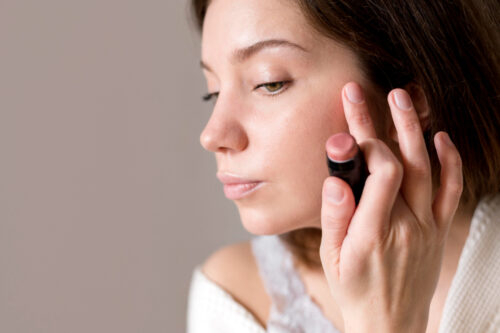
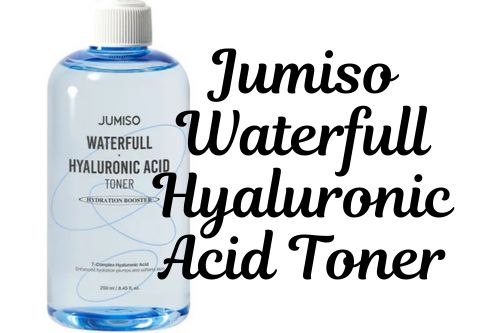
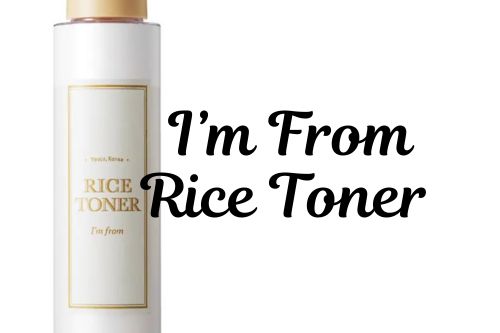
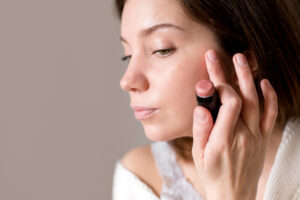
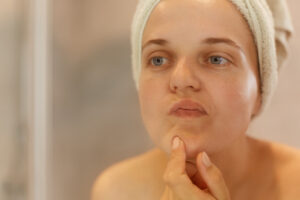
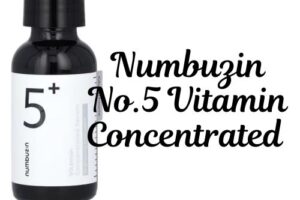
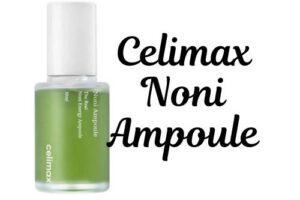
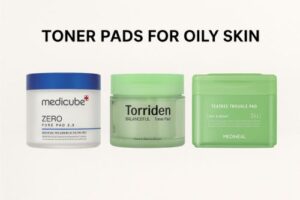
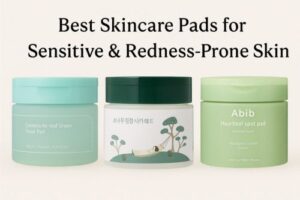
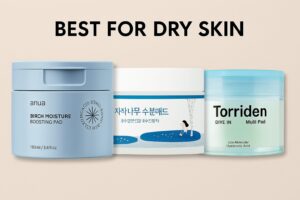
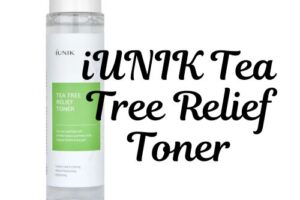
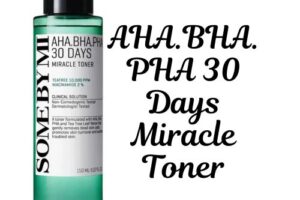
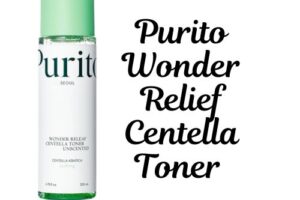
Post Comment